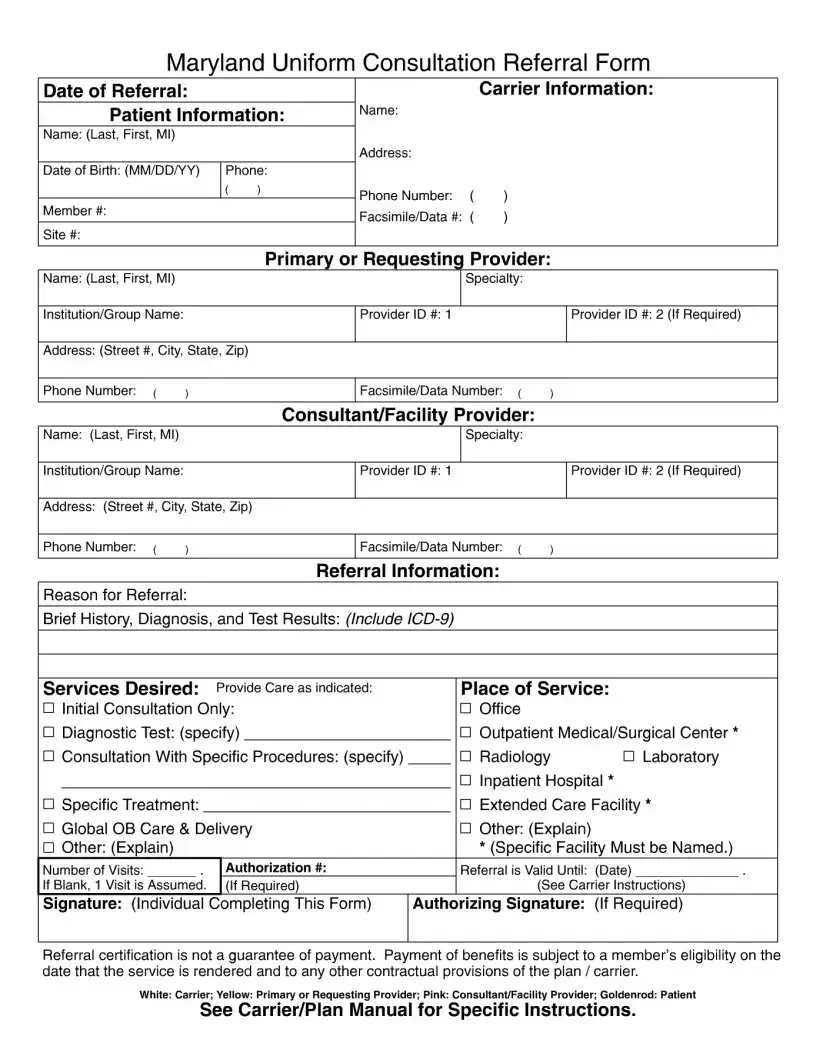The Maryland Referral Form is designed to streamline the process of referring individuals to various services within the state. These services can include health care, social services, employment assistance, and educational programs. By using this form, professionals can ensure that pertinent information is accurately and efficiently shared with the appropriate agency to facilitate the support and resources individuals need.
This form is typically filled out by professionals who are working closely with individuals in need of referral services. Common examples include healthcare providers, social workers, educators, and employment counselors. The form is intended for use by those in a position to evaluate and understand the individual's needs thoroughly, ensuring that the referral is appropriate and beneficial.
The form requires a variety of information to ensure a comprehensive referral process, including:
-
Personal Information: Full name, contact details, and identification of the individual being referred.
-
Reason for Referral: Specific reasons why the individual requires the services of the agency to which they are being referred.
-
Service Requested: Detailed description of the service or assistance needed.
-
Referring Professional's Information: Name, contact details, and affiliation of the person completing the form.
This information helps in making the referral process as smooth and effective as possible.
The submission process can vary depending on the agency or service provider the referral is being made to. Generally, the completed form can be submitted through email, fax, or mail. It is vital to check with the specific agency for their preferred method of submission and ensure that all guidelines are followed to avoid delays in the referral process.
Yes, in many cases, the Maryland Referral Form can be submitted electronically. However, this depends on the capabilities and preferences of the receiving agency. Electronic submission can expedite the referral process, making it easier and faster for both the referring professional and the receiving agency. It's recommended to verify if this option is available and preferable by the intended service provider.
After the form is submitted, it will be reviewed by the receiving agency to determine the appropriateness of the referral and the next steps. The individual being referred may be contacted for additional information or to schedule an appointment. It is important for the referring professional to follow up with the agency if necessary, to ensure that the referral has been processed and to assist with any further requirements. Communication between the referring professional, the individual, and the agency is crucial for successful service provision.
